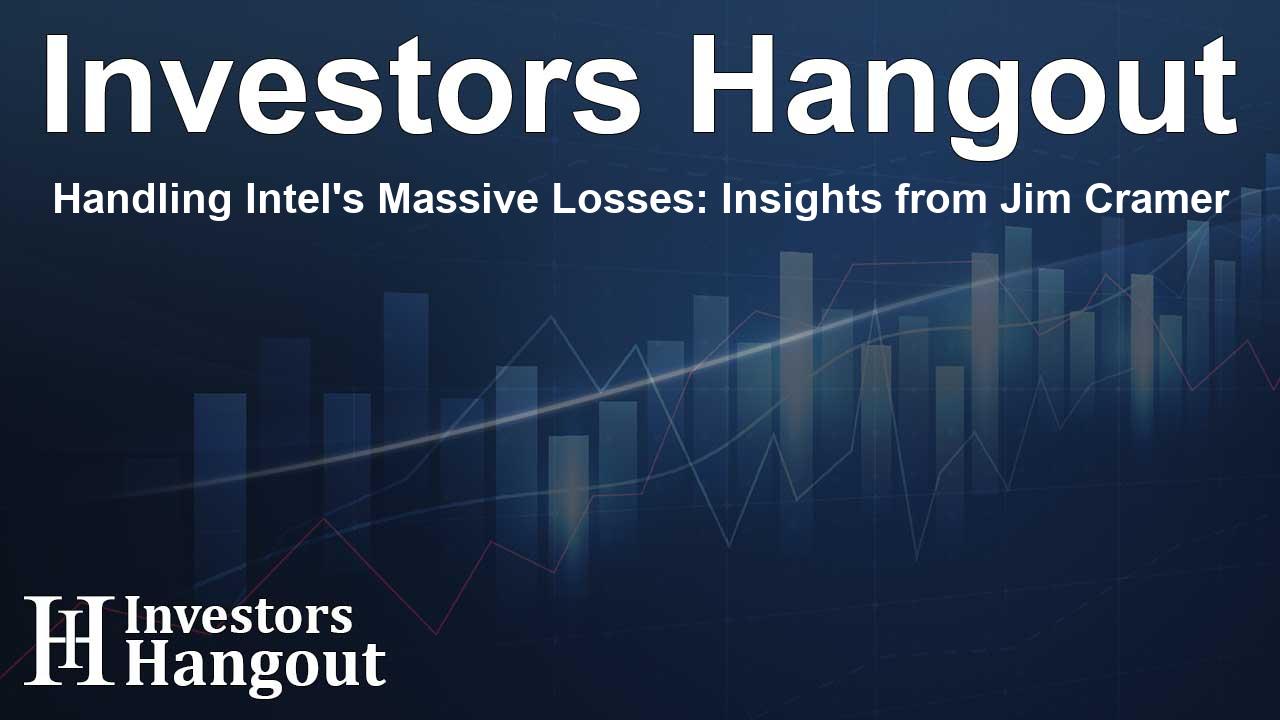Handling Intel's Massive Losses: Insights from Jim Cramer

Understanding Intel's Foundry Losses
Recently, Jim Cramer, the renowned host of CNBC’s “Mad Money,” raised serious concerns regarding the financial state of Intel Corporation. He highlighted a staggering $18.8 billion loss in Intel's foundry division, even while the company benefited from $8.5 billion in subsidies from the U.S. CHIPS Act. This situation raises significant questions about the sustainability of manufacturing semiconductor products domestically amidst fierce global competition.
Challenges Facing U.S. Semiconductor Manufacturing
Cramer’s remarks resonate as he challenges the potential for U.S. chip production to thrive in an increasingly competitive landscape. He voiced his skepticism on social media, underscoring the disheartening reality facing Intel and its ambitious goals. "You want to build semis here? We sell your stock," he emphasized, reflecting the skepticism around the operational viability of maintaining semiconductor production within the United States.
The 18A Chip Project and Its Woes
Intel's significant financial setbacks are closely tied to its ambitious 18A chip project—a key initiative designed to restore the company’s technological lead in the semiconductor industry. Unfortunately, recent reports indicate that this project is struggling with yield issues, which may hinder Intel's ability to profitably produce next-generation chips. The 18A process, which has been developed over several years with substantial investments, is critical for Intel in the competition against industry giants.
Competition Heats Up
In addition to its internal challenges, Intel must also contend with fierce competition from rivals such as Advanced Micro Devices (AMD) and Qualcomm (QCOM). As these competitors ramp up their operations and innovate, Intel’s position is at risk of further deterioration. Already, Fitch Ratings has downgraded Intel’s long-term credit rating from BBB+ to BBB, citing the ongoing struggles the company faces in maintaining demand for its products.
Recent Financial Performance
Despite posting a second-quarter revenue of $12.86 billion that exceeded analyst expectations, Intel still recorded an adjusted loss of 10 cents per share. This disappointing result flew in the face of analysts' anticipations of a one-cent profit. Notably, the foundry division saw revenue growth of 3% year-over-year, summing up to $4.4 billion, a positive note amid the overarching challenges.
Mixed Performance in the Market
Intel's performance is further spotlighted by Benzinga’s Edge Rankings, which classify Intel at the 38th percentile for momentum and the 76th percentile for value, demonstrating its mixed performance in the market. This indicates that while the company retains some financial health, significant improvements are necessary if it hopes to reclaim a dominant market position.
Moving Forward
Amid these battles and challenges, it is clear that Intel is at a crossroad. The future holds uncertainty, but with leadership and innovation, it might find a way to reformulate its strategies. As the semiconductor industry continues to evolve, Intel will need to adapt swiftly and effectively to ensure its long-term sustainability and success.
Frequently Asked Questions
What is the primary concern highlighted by Jim Cramer regarding Intel?
Cramer is concerned about Intel's massive $18.8 billion loss in its foundry division, despite receiving significant government subsidies.
What is the significance of the 18A project for Intel?
The 18A project is essential for Intel's strategy to regain its technological edge in semiconductor manufacturing, though it faces substantial yield issues.
How has Intel performed financially in recent reports?
Intel reported revenue that surpassed analyst expectations, but it still experienced an adjusted loss, disappointing market expectations.
Who are Intel’s main competitors in the semiconductor industry?
Intel faces fierce competition from companies such as Advanced Micro Devices (AMD) and Qualcomm (QCOM).
What does the future hold for Intel amid its current challenges?
Intel must adapt its strategies to navigate through these challenges effectively and regain its competitive edge in the evolving semiconductor market.
About The Author
Contact Lucas Young privately here. Or send an email with ATTN: Lucas Young as the subject to contact@investorshangout.com.
About Investors Hangout
Investors Hangout is a leading online stock forum for financial discussion and learning, offering a wide range of free tools and resources. It draws in traders of all levels, who exchange market knowledge, investigate trading tactics, and keep an eye on industry developments in real time. Featuring financial articles, stock message boards, quotes, charts, company profiles, and live news updates. Through cooperative learning and a wealth of informational resources, it helps users from novices creating their first portfolios to experts honing their techniques. Join Investors Hangout today: https://investorshangout.com/
The content of this article is based on factual, publicly available information and does not represent legal, financial, or investment advice. Investors Hangout does not offer financial advice, and the author is not a licensed financial advisor. Consult a qualified advisor before making any financial or investment decisions based on this article. This article should not be considered advice to purchase, sell, or hold any securities or other investments. If any of the material provided here is inaccurate, please contact us for corrections.
